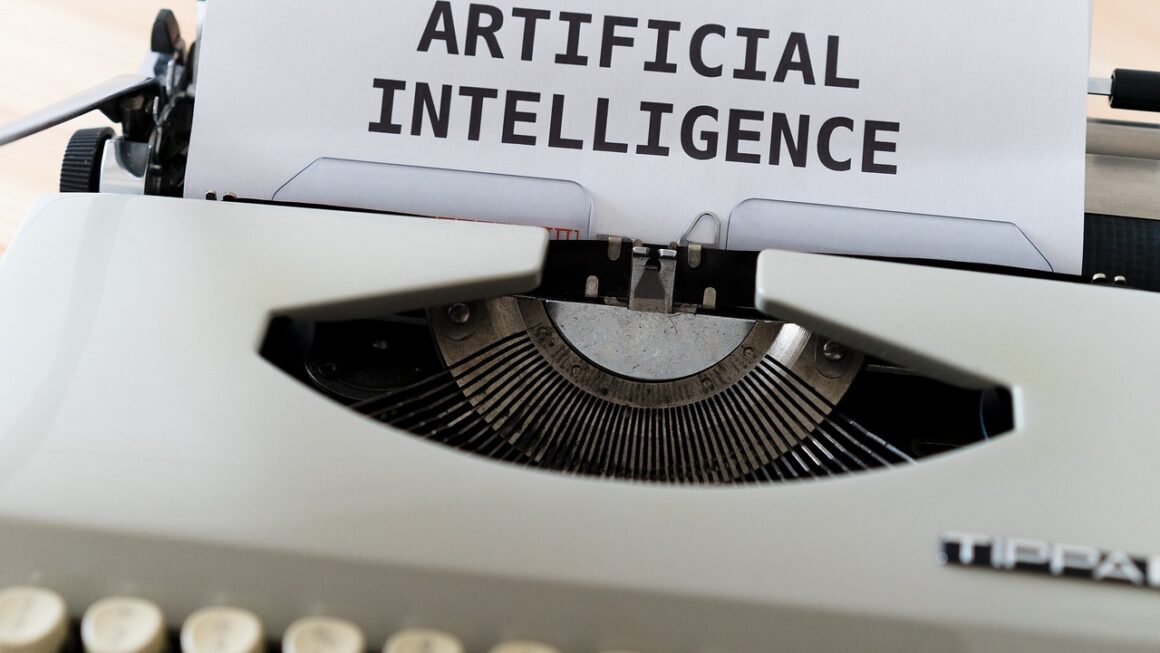The rapid advancement of Artificial Intelligence (AI) is revolutionizing industries and reshaping our lives, presenting unprecedented opportunities and complex challenges. As AI systems become more sophisticated and integrated into critical infrastructure, the need for robust AI regulation is becoming increasingly urgent. This blog post explores the multifaceted landscape of AI regulation, delving into its rationale, current state, key considerations, and potential future directions. Navigating this complex area is crucial for fostering innovation while safeguarding societal values and mitigating potential risks associated with AI.
The Rationale Behind AI Regulation
Ensuring Safety and Mitigating Risks
AI systems, particularly those operating autonomously, can pose significant risks if not properly designed, tested, and monitored. Regulation can help ensure that AI systems are safe and reliable, minimizing the potential for accidents, errors, and unintended consequences.
- Example: Self-driving cars rely on AI to navigate and make decisions. Regulation can mandate rigorous testing and safety standards to prevent accidents and protect pedestrians and passengers.
- Actionable Takeaway: Prioritize safety by implementing comprehensive risk assessments and testing protocols for AI systems.
Promoting Fairness and Preventing Discrimination
AI systems can perpetuate and amplify existing biases in data, leading to discriminatory outcomes in areas such as hiring, lending, and criminal justice. Regulation can help prevent AI systems from discriminating against individuals or groups based on protected characteristics.
- Example: Facial recognition technology has been shown to be less accurate in identifying individuals with darker skin tones. Regulation can require developers to address these biases and ensure that AI systems are fair and equitable.
- Actionable Takeaway: Implement bias detection and mitigation techniques to ensure fairness and prevent discrimination in AI systems.
Protecting Privacy and Data Security
AI systems often rely on vast amounts of personal data, raising concerns about privacy and data security. Regulation can help protect individuals’ privacy by limiting the collection, use, and sharing of personal data by AI systems.
- Example: AI-powered surveillance systems can collect and analyze data about individuals’ movements and activities. Regulation can limit the use of this data and require transparency about how it is being collected and used.
- Actionable Takeaway: Implement strong data protection measures and ensure transparency about data collection and usage practices in AI systems.
The Current State of AI Regulation
Global Approaches to AI Regulation
AI regulation is still in its early stages, and different countries and regions are taking different approaches. Some are focusing on voluntary guidelines and ethical frameworks, while others are developing more binding regulations.
- European Union (EU): The EU is taking a leading role in AI regulation with the proposed AI Act, which would establish a comprehensive legal framework for AI systems. The AI Act categorizes AI systems based on risk, with high-risk systems subject to stricter requirements.
- United States (US): The US is taking a more sector-specific approach to AI regulation, with different agencies regulating AI in areas such as healthcare, finance, and transportation. The National Institute of Standards and Technology (NIST) has developed an AI Risk Management Framework to help organizations manage AI risks.
- China: China is also developing AI regulations, focusing on areas such as data security, algorithmic bias, and the use of AI in autonomous vehicles.
- Actionable Takeaway: Stay informed about the evolving landscape of AI regulation in different jurisdictions to ensure compliance and adapt your AI strategies accordingly.
Challenges in Implementing AI Regulation
Implementing effective AI regulation presents several challenges, including:
- Rapid Technological Advancements: AI technology is evolving rapidly, making it difficult for regulators to keep pace.
- Defining AI: There is no universally agreed-upon definition of AI, which makes it difficult to define the scope of AI regulation.
- Balancing Innovation and Regulation: Regulation can stifle innovation if it is too restrictive or prescriptive.
- International Cooperation: AI is a global technology, and international cooperation is needed to ensure that AI regulation is consistent and effective.
- Actionable Takeaway: Advocate for flexible and adaptive regulatory frameworks that can keep pace with technological advancements and foster responsible innovation.
Key Considerations for Effective AI Regulation
Risk-Based Approach
A risk-based approach to AI regulation focuses on regulating AI systems based on the level of risk they pose to individuals and society. This allows regulators to prioritize resources and focus on the most critical areas.
- Example: AI systems used in healthcare or finance would be subject to stricter regulation than AI systems used for entertainment.
- Actionable Takeaway: Support the development of risk-based regulatory frameworks that prioritize the most critical AI applications.
Transparency and Explainability
Transparency and explainability are crucial for building trust in AI systems. Regulation can require developers to provide clear and understandable explanations of how AI systems work and how they make decisions. This is often referred to as “Explainable AI” or XAI.
- Example: A bank using AI to make loan decisions should be able to explain why a particular applicant was denied a loan.
- Actionable Takeaway: Prioritize transparency and explainability in the design and development of AI systems to build trust and accountability.
Accountability and Liability
It is important to establish clear lines of accountability and liability for AI systems. Regulation can specify who is responsible for the actions of AI systems and what remedies are available to individuals who are harmed by AI systems.
- Example: If a self-driving car causes an accident, it is important to determine who is liable for the damages – the manufacturer, the owner, or the AI system itself.
- Actionable Takeaway: Advocate for clear accountability and liability frameworks that assign responsibility for the actions of AI systems.
Ethical Frameworks and Guidelines
In addition to formal regulation, ethical frameworks and guidelines can play an important role in shaping the responsible development and use of AI. These frameworks can provide guidance on issues such as fairness, transparency, and accountability.
- Example: The IEEE has developed a set of ethical principles for AI, including the principles of human well-being, transparency, and accountability.
- Actionable Takeaway: Adopt and promote ethical frameworks and guidelines to guide the responsible development and use of AI systems.
The Future of AI Regulation
Anticipating Future Challenges
As AI technology continues to evolve, regulators will need to anticipate future challenges and adapt their regulatory frameworks accordingly. This includes considering the implications of emerging technologies such as generative AI, quantum computing, and artificial general intelligence (AGI).
- Example: Generative AI models can create realistic images, videos, and text, raising concerns about deepfakes and misinformation. Regulators will need to address these challenges by developing new tools and techniques for detecting and combating deepfakes.
- Actionable Takeaway: Engage in proactive foresight and planning to anticipate future challenges and adapt AI regulatory frameworks accordingly.
Fostering Innovation and Collaboration
AI regulation should strike a balance between protecting society and fostering innovation. Regulators should work closely with industry, academia, and civil society to develop regulatory frameworks that are effective and efficient.
- Example: Regulatory sandboxes can allow companies to test new AI technologies in a controlled environment without being subject to the full force of regulation. This can encourage innovation while ensuring that AI systems are safe and reliable.
- Actionable Takeaway: Support initiatives that foster collaboration between regulators, industry, academia, and civil society to develop effective and innovation-friendly AI regulatory frameworks.
Conclusion
AI regulation is a complex and evolving field with the potential to shape the future of AI and its impact on society. By focusing on safety, fairness, privacy, and accountability, we can harness the benefits of AI while mitigating its risks. A collaborative and adaptive approach to AI regulation is essential for fostering innovation and ensuring that AI is used for the benefit of all. As AI continues to advance, ongoing dialogue and adaptation will be key to navigating the challenges and opportunities that lie ahead. Staying informed, engaging in discussions, and advocating for responsible AI practices are crucial steps in shaping a future where AI benefits humanity.




